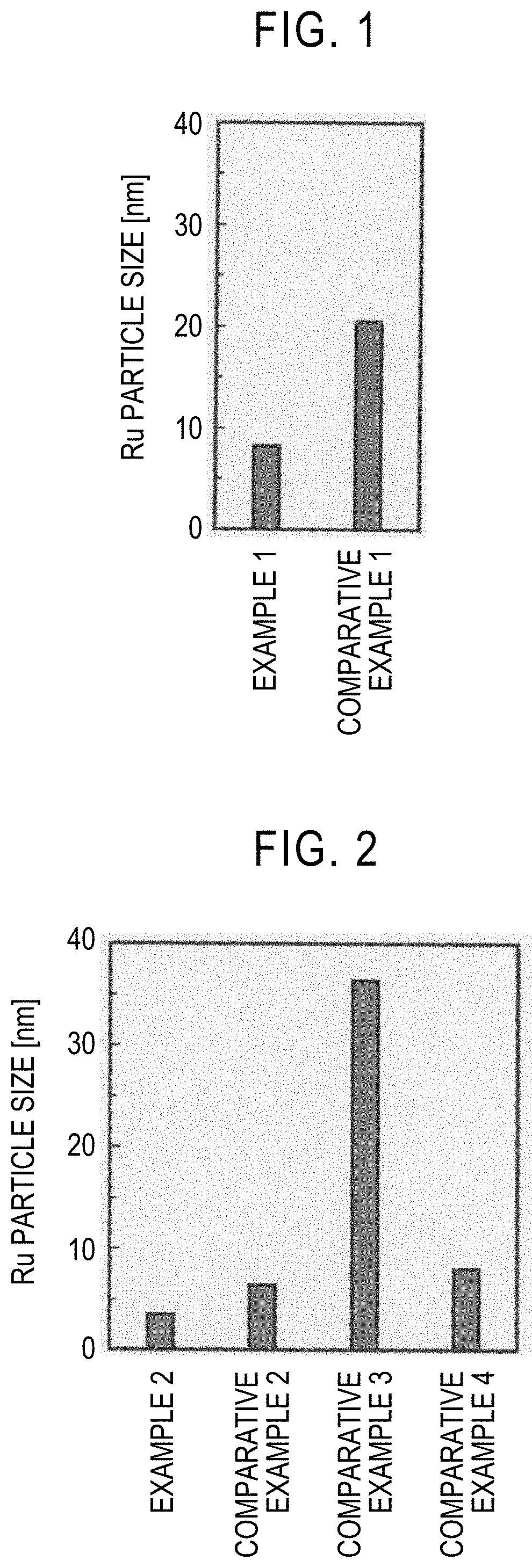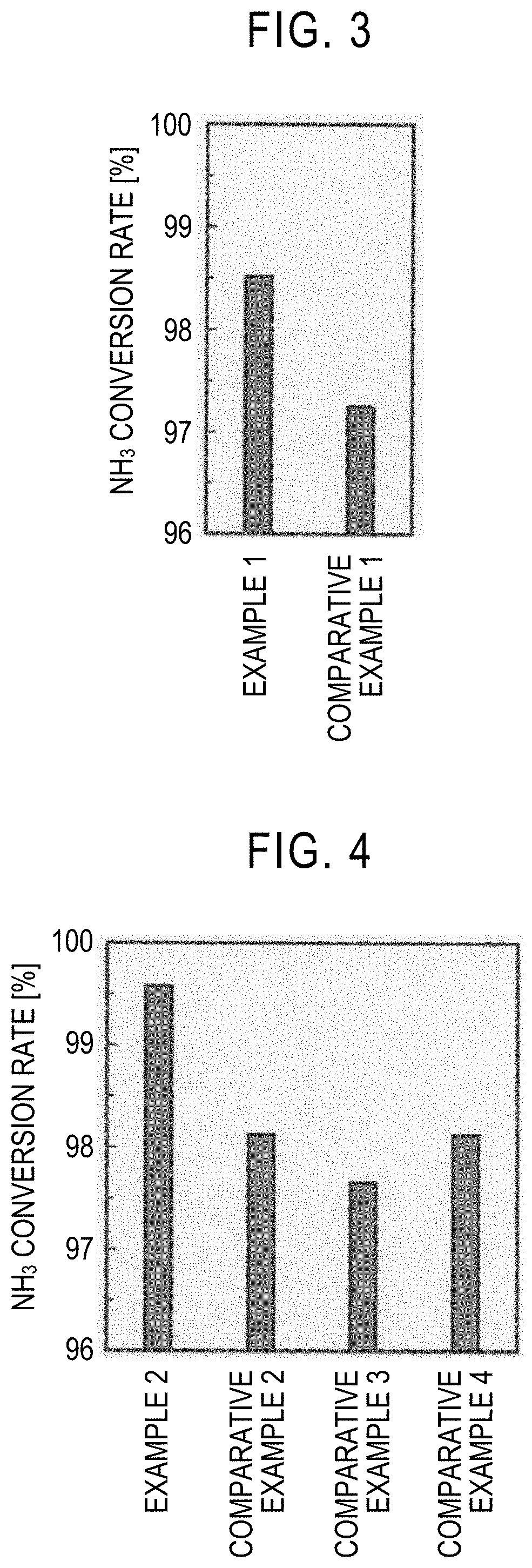Ammonia decomposition catalyst and ammonia decomposition method using the same
a technology of ammonia decomposition and catalyst, which is applied in the direction of catalyst activation/preparation, metal/metal-oxide/metal-hydroxide catalyst, etc., can solve the problems of poor ammonia decomposition activity, and insufficient ammonia decomposition activity, etc., to achieve efficient decomposition of ammonia and strong ammonia decomposition activity
- Summary
- Abstract
- Description
- Claims
- Application Information
AI Technical Summary
Benefits of technology
Problems solved by technology
Method used
Image
Examples
example 1
[0045]First, 9.14 g of diammonium cerium nitrate (IV), 3.63 g of praseodymium nitrate (III) hexahydrate, and 24 g of urea were dissolved in 200 g of deionized water. The obtained aqueous solution was stirred for 8 hours while keeping the temperature at 100° C. Thereby, urea was decomposed to produce ammonia, and a precipitate was additionally produced. The precipitate was collected by filtration and then washed with boiling water (100° C.). The solid component after washing was dried at 110° C. for 17 hours and then fired in the atmosphere at 650° C. for 8 hours to obtain a composite oxide. The molar ratio between Ce and Pr in the composite oxide was Ce:Pr=67:33.
[0046]Next, 0.128 g of dodecacarbonyltriruthenium (0) was dissolved in 75 g of tetrahydrofuran. 4 g of the composite oxide was added to the obtained solution with stirring and immersed, and the solution was impregnated into the composite oxide and then evaporated and dried at room temperature. The obtained dry component was ...
example 2
[0047]0.609 g of ruthenium chloride, and predetermined amounts of cerium nitrate (III) hexahydrate and praseodymium nitrate (III) hexahydrate were dissolved in 200 ml of deionized water so that, in the catalyst containing a carrier containing a composite oxide of Ce and Pr, and Ru, the Ru content was 3 parts by mass with respect to 100 parts by mass of the composite oxide, and the molar ratio between Ce and Pr was Ce:Pr=67:33. An aqueous solution prepared by dissolving 12.6 g of potassium carbonate in 200 ml of deionized water was gradually added to the obtained aqueous solution with vigorous stirring. Thereby, a precipitate was produced. Here, the amount of potassium carbonate in this case was determined so that the total number of moles of potassium was three times the number of moles of ruthenium, four times the number of moles of cerium, and three times the number of moles of praseodymium. The produced precipitate was left at room temperature for 24 hours and aged and then colle...
example 3
[0048]A pellet catalyst was obtained in the same manner as in Example 2 except that the amounts of cerium nitrate (III) hexahydrate and praseodymium nitrate (III) hexahydrate were changed so that, in the catalyst containing a carrier containing a composite oxide of Ce and Pr, and Ru, the Ru content was 3 parts by mass with respect to 100 parts by mass of the composite oxide, and the molar ratio between Ce and Pr was Ce:Pr=99:1. When the density of the pellet catalyst was measured in the same manner as in Example 1, it was 0.96 g / cm3.
PUM
| Property | Measurement | Unit |
|---|---|---|
| temperature | aaaaa | aaaaa |
| temperature | aaaaa | aaaaa |
| heat resistance | aaaaa | aaaaa |
Abstract
Description
Claims
Application Information
 Login to View More
Login to View More - R&D
- Intellectual Property
- Life Sciences
- Materials
- Tech Scout
- Unparalleled Data Quality
- Higher Quality Content
- 60% Fewer Hallucinations
Browse by: Latest US Patents, China's latest patents, Technical Efficacy Thesaurus, Application Domain, Technology Topic, Popular Technical Reports.
© 2025 PatSnap. All rights reserved.Legal|Privacy policy|Modern Slavery Act Transparency Statement|Sitemap|About US| Contact US: help@patsnap.com



